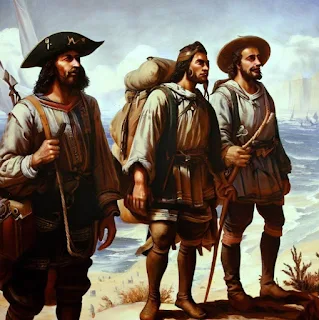Sofala: A Key Stop on Covilhã's African Odyssey
To Portuguese explorers, Sofala was not merely a geographical destination but a vibrant crossroads of cultures and trade during the late 15th century.
The Age of Exploration in the late 15th century was a transformative era in African human history. It was a time when intrepid European explorers set out on perilous journeys to chart unknown territories, establish trade routes, and uncover the world's mysteries.
Among these adventurers was Pêro de Covilhã, a Portuguese explorer whose remarkable expedition to Mozambique in 1487 is a captivating chapter in the annals of exploration. This exploration was driven by the desire to find the mythical Christian King, Prester John, and to discover a sea route to the fabled land of spices, India.
Located on the eastern coast of Africa, Sofala was not merely a geographical destination but a vibrant crossroads of cultures, trade, and aspirations during the late 15th century. Sofala's significance lies in its role as a bustling trading hub. It was strategically situated at the mouth of the Sofala River, offering access to the hinterlands rich in precious commodities. Gold, ivory, spices, and other valuable goods flowed through this maritime gateway, making it a focal point for regional and international trade.
Sofala was a center for economic exchange and a melting pot of cultures. Swahili, Arab, Persian, and African influences converged, creating a dynamic and cosmopolitan atmosphere. Pêro de Covilhã would have encountered a tapestry of languages, traditions, and customs that enriched his understanding of the diverse world he was exploring.
Pêro de Covilhã's journey, significance, and impact on the Age of Exploration.
In 1487, during a period known as the Age of Exploration, a Portuguese explorer named Pêro de Covilhã embarked on a significant journey to Mozambique, a coastal region in East Africa. He wasn't alone; he was part of a scouting expedition led by Afonso de Paiva. Their mission was twofold: first, to find the legendary Christian King called Prester John, and second, to discover a sea route to India.
Prester John was a mythical Christian ruler believed to reside in a distant and mysterious land. European explorers, like Pêro de Covilhã, were intrigued by legends about Prester John and hoped to establish contact with him. They believed he could be a powerful ally in the quest to spread Christianity and find new trade routes.
During the 15th century, European nations, including Portugal, were eager to find a direct sea route to India. This was because the overland routes through the Middle East were long and perilous. By finding a sea route, they could easily access the lucrative spice trade in India.
Pêro de Covilhã's journey was quite remarkable. He set out on his expedition, which took him through various places like Cairo in Egypt and Aden in Yemen. These were important stops along his route as they were key trade and cultural centers in the medieval world. After successfully reaching India, he decided to return to Portugal. During his return voyage, he made stops along the African coast, including the town of Sofala, in the year 1489.
Sofala was significant because it was known as a thriving trading hub on the East African coast. It was a place where valuable goods like gold, ivory, and spices were exchanged. Pêro de Covilhã's visit to Sofala would have been a crucial part of his exploration, as it allowed the Portuguese to establish connections with the African coastal regions.
Pêro de Covilhã's journey to Mozambique in 1487 was part of Portugal's ambitious efforts to explore new lands, establish trade routes, and connect with mythical figures like Prester John. His travels contributed to the broader Age of Exploration, which reshaped the world by connecting distant regions and cultures through trade and exploration.







